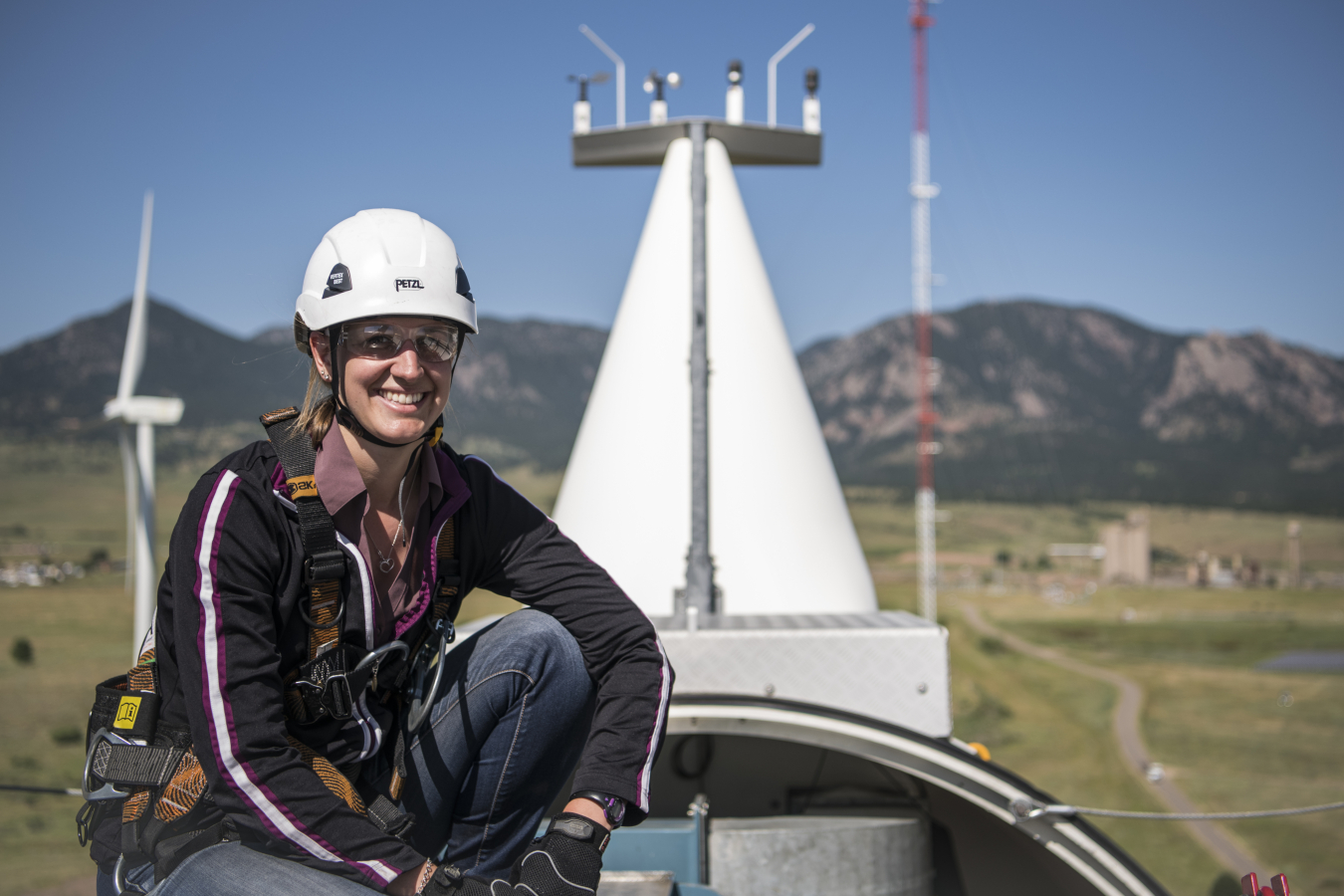Learn why Dr. Jen King loves her job as a research engineer at the National Renewable Energy Laboratory's National Wind Technology Center.
December 16, 2019
Jen King is a research engineer at the National Renewable Energy Laboratory (NREL) working at the National Wind Technology Center primarily on autonomous energy systems and designing hybrid systems. She has been at NREL since 2016. She is passionate about finding new ways to better integrate and operate renewable energy into the grid of the future. She obtained her Ph.D. in aerospace engineering and mechanics from the University of Minnesota in 2016 where she discovered her passion for renewable energy, specifically wind. Her primary focus was on reduced-order modeling for wind farm control. Her current focus areas are in reduced-order modeling and distributed control/optimization of large-scale hybrid systems.
What inspired you to work in STEM?
My dream as a kid was to be an astronaut. I even applied to be one. However, in grad school, I fell in love with renewable energy research, particularly wind energy. My adviser, Pete Seiler, introduced me to the world of wind farm control where the main objective was to try and control the wind; a pretty tall order. As I progressed in my program, I became hooked on the research and the complexities surrounding wind from controls from fluid dynamics to grid integration. I also had the opportunity to collaborate with NREL researchers throughout grad school by spending my summers collaborating with researchers at NREL on wind energy research. This provided a broader view of the wind energy research challenges outside of the PhD program. There are many challenges to wind energy research and renewable energy research in general, and I love going to my job every day because of it.
What excites you about your work at the Energy Department?
We continually get to operate on the frontier of the energy system of the future. We get to address some of the greatest challenges that are facing our world today including how to design, operate, and control the energy system of the future in the face of growing amounts of renewables as well as physical and cyber threats.
I am a part of several really exciting projects which, in my opinion, could have a significant impact on the future energy system. First, I am part of a team advancing wind farm control strategies to improve the performance of wind farms. We develop controls-oriented models as well as controls and optimization strategies to more efficiently operate wind farms in real-time. As a part of bringing our efforts full circle at NREL, I also work on ways to better integrate wind into the autonomous energy system of the future. In this energy system of the future, the grid, renewables, buildings, and vehicles will work together in a distributed fashion that takes advantage of the millions of controllable devices that are now online or coming online. My most recent work looks at the advantages of pairing wind energy with other resources, such as solar, to design more reliable power plants for the grid of the future. As renewable energy becomes a larger portion of the grid, hybrid power plants that can provide energy at the right times of day to improve the reliability of the grid will be more important.
How can our country engage more women, girls, and other underrepresented groups in STEM?
Get them involved early and introduce them to what is possible. One example from my life that illustrates this idea is that I was a part of a group called TSMART – Teaching Science, Math, and Research Technology – at the University of Minnesota that developed lesson plans for an extracurricular class at an underserved middle school in Minneapolis. We visited there once a week. We introduced a concept at the beginning of the class and spent the rest of the class doing a hands-on experiment or building something. This included extracting DNA from strawberries, building wind turbines, and launching rockets. In each case, the kids got to explore different concepts and connect what they learned in the beginning to what they were doing with their hands. With these opportunities, I believe it’s important to encourage kids to be both critical and creative thinkers. It was great to see how the kids were able to figure it out on their own. Both the kids and the volunteer instructors loved being there every week and by the end of the school year, a lot of the kids were considering STEM careers.
Do you have tips you'd recommend for someone looking to enter your field of work?
There are a lot of things you can do to get into this field of work. Much of it starts by talking to people who work on things that you think you would enjoy. Networking is key. Reach out to people to learn about their careers and about their day to day. Everyone has a unique path and has their own unique experiences that led them to the career they have. Be open to learning and open to collaboration, and don’t be afraid to step outside your comfort zone.
Most importantly, at the end of the day, always work on something you believe in.
When you have free time, what are your hobbies?
I love doing anything outdoors: hiking, biking, running, camping, backpacking.
Learn more about our programs & resources for women and girls in STEM at /women

